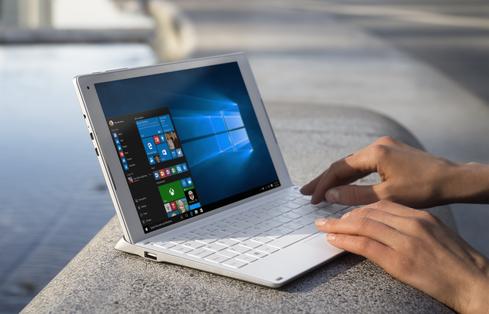Microsoft Positions Cortana, Skype, AI As 'Future Of Communications'Microsoft Positions Cortana, Skype, AI As 'Future Of Communications'
Microsoft is exploring new communication technologies with updates to Skype, Cortana and artificial intelligence.


10 Windows 10 Hacks To Maximize Your Experience
10 Windows 10 Hacks To Maximize Your Experience (Click image for larger view and slideshow.)
In his introductory keynote for Microsoft's Build 2016 developer's conference, CEO Satya Nadella explained the company's vision for the future of communication. The concept of "conversation as a platform" will serve as the foundation of how we will interact with technology and one another.
"We want to take the power of human language and apply that more pervasively to all the computing interfaces and computing interactions," he said, also noting the future "is not going to be about man vs. machines, it's going to be about man with machines."
This will require humans to teach computers human language, conversational understanding, and their personal preferences so technology can be more helpful in day-to-day life. Nadella noted how as humans infuse intelligence into everything, it's important for Microsoft to have a principled approach and have a way to guide their communication design.
[Study shows Office 365 and Slack are gaining enterprise users.]
He explained how there will be three actors in the future of interaction: People who have natural conversation with one another, personal digital assistants who know people, and bots, which serve as new applications that converse with people.
"Human language is the new UI layer, bots are the new apps, and digital assistants are meta apps," said Nadella. He acknowledged Cortana, the personal digital assistant Microsoft launched two years ago, as an example of the type of "unbounded" assistant that will work across devices.
Microsoft will launch a new Cortana app collection as part of the Windows 10 Anniversary Update, but it wants to go beyond this and make conversations as easy as person-to-person chats. It plans to make Cortana's expertise extensible and give developers the chance to add to its capabilities across devices.
To improve accessibility in the summer OS update, Cortana will be available straight from the lock screen so users can play music, set alarms, and get directions without entering their device. The assistant will also be available in Outlook, with user permission, for scheduling appointments and emails.

Learn to integrate the cloud into legacy systems and new initiatives. Attend the Cloud Connect Track at Interop Las Vegas, May 2-6. Register now!
Microsoft is trying to create Cortana so it proactively does things before you instruct it. For example, if Cortana notices you're talking about meeting with someone, it will add the meeting to your calendar and pinpoint conflicts. If it sees a receipt in your email, it will ask if you want to create an expense report and pre-populate the form with the correct information.
In other communication updates, the Skype team is integrating intelligent Bots into Skype chats. The next generation of Skype will have Cortana always ready in the upper right-hand corner for one-on-one interaction. Cortana will broker conversations with Bots to be a more proactive assistant and enact the ideas you're discussing.
The Bots enable users to hire a cab, book a plane ticket, and perform other actions traditionally done with individual apps. If Cortana notices you're talking about travel to a particular city where a friend lives, the assistant will contact the Bot that will give you options to message them.
A new Skype client, with Skype Bots, is currently in preview on Windows, Android, iPhone and iPad. There is also a new Skype developer program available for those who want to start building Bots. Microsoft announced the Bot Connector and Bot Builder, which developers can use to connect bots and create new ones.
Senior PM Cornelia Carapcea announced the preview for Microsoft Cognitive Services. This is a new portfolio of 22 APIs that developers can use to build intelligent solutions for seeing, hearing, and interpreting the surrounding world.
The idea is developers can expand on existing perceptual intelligence capabilities (vision, text, speech) to experiment with cognitive capabilities like emotion. Some examples of APIs now available for free include the Emotion API for emotion recognition, Speaker Recognition API so the app can determine who is speaking, and Text Analytics API to detect key phrases and topics within text.

About the Author
You May Also Like






